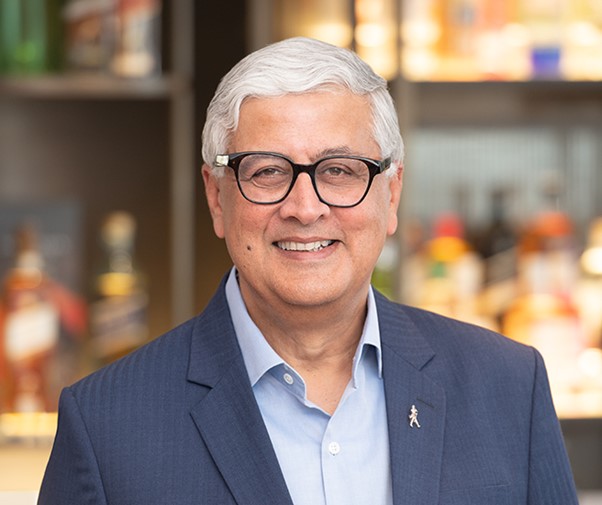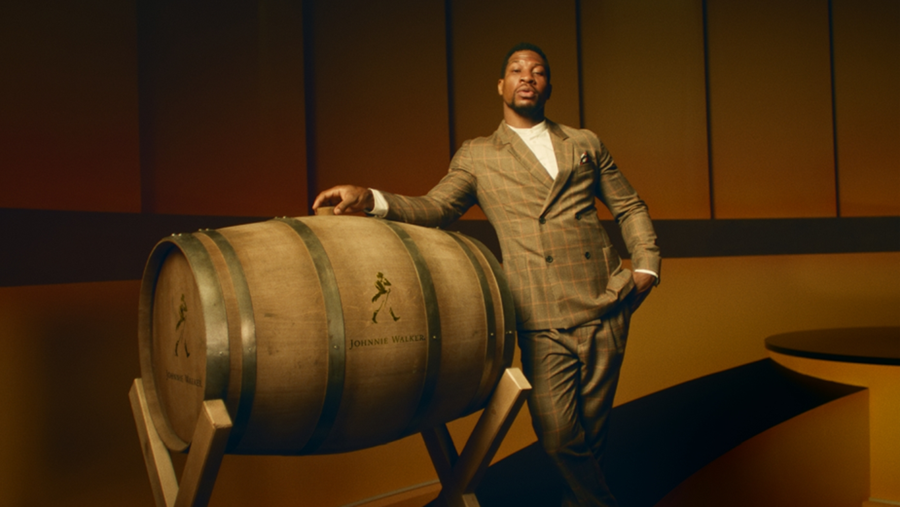Strong Scotch at Diageo Towers
In its latest half-year results, Diageo's Scotch portfolio has benefitted hugely from the company's global spread. From Beijing to Brazil, its brands did more than enough to offset declines in the States, reports Tom Bruce-Gardyne for WhiskyInvestDirect…
The freshly knighted Sir Ivan Menezes will be a hard act to follow. The 63 year-old CEO of Diageo has been at the helm of the drinks giant for a decade and has overseen some impressive growth over the past four years.
"Today, Diageo is 36% larger than it was prior to Covid-19, reflecting the strength of our diversified footprint and advantaged portfolio," Menezes declared when announcing the half-year results (HY23) last week.

"2% volume growth, 9% revenue growth and margin expansion. In today's environment that's not easy," he said of Diageo's performance in the six months to December 31st. Scotch on its own, which accounts for 29% of the company's sales by value, did even better – with volumes up 6% and revenue up 19% over the period.
Six months ago, there was much jubilation at Diageo Towers when Menezes announced that the company's pride and joy, Johnnie Walker, had smashed through the £2 billion barrier to hit sales of 21 million cases in FY22. Could the brand keep it up? Yep, it sure could - posting a 21% jump in net sales in these latest results and squashing any hint of a suggestion that the previous figures had been loaded to hit those targets.
For Menezes, its success is nothing new and is all thanks to the brand team for creating what he called: "a brand-building and marketing approach to Johnnie Walker that has been world-class."
Probably a key factor, in his view, is that: "We look at the market with a TBA (total beverage alcohol) lens, and we're not fighting within whisky or Scotch." While in terms of marketing dollars - "we have significantly upweighted our spending on the brand."
At the results press conference we were given a glimpse of that spend in an ad from the latest campaign for Johnnie Walker Black Label. In it, the American actor Jonathan Majors glides through a luscious, gold-coloured set in a well-cut suit to some cool jazz.

In comparison to the entry-level Red Label, whose net sales grew 21%, Black Label was up 26% globally and double that amount in Asia Pacific, while Blue Label, which sells for around £165 in the UK, managed just 11%. So, not quite the trade-up of FY22, when Red Label was +20%, Black was +40% and Blue +60%.
This suggests a slow-down in that mantra beloved of big booze corporations like Diageo, that of premiumisation. But countering this, the company points to a survey where a third of American drinkers claimed to have spent US$50 or more on a bottle in 2022 compared to a quarter a year earlier.
The one market that has not done so well, at least in blended Scotch, was North America. Here Johnnie Walker shrank 12% in volume and 7% in value during the period, while sales of Buchanan's were down 20%, and by 12% in value. This was offset by a hefty 61% rise in net sales of single malts, primarily driven by Lagavulin, and good growth from Diageo's Bourbon brand Bulleit.
Yet the real driving force for Diageo North America, and the reason it is more-or-less maintaining market share in spirits, is tequila and the company's twin power brands of Don Julio and Casamigos which are now four times bigger than they were four years ago. The decision to embrace premium, 100% agave tequila has reaped enormous dividends for Diageo, at least in America and Mexico which accounted for 87% of the spirit's global volumes in 2021 according to the IWSR.
Cross the border into Mexico, and from thereon down, Diageo's Scotch brands did remarkably well with net sales of Johnnie Walker up 24%, Old Parr up 39% and Black & White plus 30% in Latin America.
And things were even better on the other side of the world in Asia Pacific, with JW growing 42% and its regional stablemate Windsor up 55%. In China, the company's Scotch sales were up by a fifth which just about offset the decline in its Baijiu brand Shui Jing Fang.
All this should be cause for celebration among the powers that be in the drink's homeland. Instead, the Scottish government is pressing ahead with its consultation to ban as much drinks advertising as it can. If passed into law, it could theoretically force the Johnnie Walker Experience in Edinburgh to darken its windows and remove representations of the Striding Man.
"My immediate concern is what this raises for smaller players, and the ecosystem of industries and suppliers, because they are the ones that will struggle," said Dan Mobley, Diageo's global corporate relations director. "Johnnie Walker has been phenomenal in Scotland and throughout the world, but if you're starting a new brand, how on earth would you do that?"

Award-winning drinks columnist and author Tom Bruce-Gardyne began his career in the wine trade, managing exports for a major Sicilian producer. Now freelance for 20 years, Tom has been a weekly columnist for The Herald and his books include The Scotch Whisky Book and most recently Scotch Whisky Treasures.
You can read more comment and analysis on the Scotch whisky industry by clicking on Whisky News.




